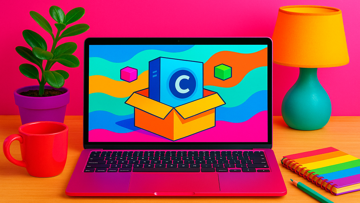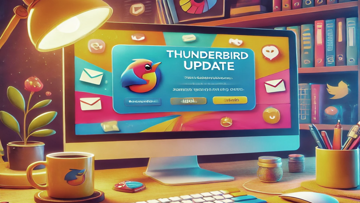Overview of Notes to Exchange 2010 Migration by NSF to PST
The migration from IBM Notes (formerly Lotus Notes) to Microsoft Exchange 2010 is a critical process for organizations looking to transition their email systems. This review focuses on the steps involved in migrating NSF (Notes Storage Facility) files to PST (Personal Storage Table) format, which is supported by Exchange. The migration process requires careful planning and execution to ensure that emails, contacts, calendars, and other essential data are transferred seamlessly.
Understanding NSF and PST Formats
Before diving into the migration process, it's important to understand the two file formats involved:
- NSF (Notes Storage Facility): The file format used by IBM Notes to store documents, emails, and other information. It holds all data within the Notes environment.
- PST (Personal Storage Table): A file format created by Microsoft for storing copies of messages, calendar events, tasks, notes, and other items within Microsoft Outlook.
Reasons for Migrating from IBM Notes to Exchange 2010
Organizations consider migrating from IBM Notes to Exchange for several reasons:
- User Interface: Microsoft Outlook offers a more intuitive and user-friendly interface than IBM Notes.
- Integration: Exchange provides better integration with other Microsoft services and applications.
- Collaboration: Exchange 2010 enhances collaboration features with shared calendars, task management, and team collaboration tools.
- Support and Updates: As Microsoft’s products receive regular updates, organizations often prefer an environment that guarantees ongoing support.
Planning the Migration Process
A successful migration relies heavily on effective planning. Below are the key steps an organization should take:
- Assessment: Evaluate the existing NSF files. Assess the size, number of users, and individual data requirements.
- Select Tools: Choose a reliable third-party tool or service that can convert NSF files to PST format. Some widely recognized options include Stellar Converter for NSF, Kernel for Lotus Notes to Outlook, and SysTools NSF to PST Converter.
- Define Timeframe: Establish a timeframe for the migration process to minimize downtime during transition.
- User Communication: Inform all users about the migration plan, expected changes, and how they will be affected during the process.
Migrating NSF Files to PST Format
The actual migration process typically consists of several phases:
1. Installation of Migration Tool
The first step is to install the chosen third-party migration tool on a system that has access to both the NSF files and the target Exchange server.
2. Loading NSF files
The tool will provide an option to browse and load NSF files. This step may include selecting individual mailboxes or folders for migration.
3. Converting NSF to PST
Once the files are loaded, use the tool’s features to start the conversion process. Most tools will allow for batch processing if multiple users are involved.
4. Previewing Data
Some migration tools offer a preview of converted data. This feature allows administrators to check data integrity before proceeding with final export.
5. Exporting to PST Format
The conversion tool will export converted data into PST format suitable for Microsoft Outlook or Exchange 2010. This will typically generate individual PST files for each user or a collective file based on preferences.
6. Importing PST into Exchange 2010
The final step involves importing the exported PST files into Exchange 2010 using Microsoft's built-in Import Wizard in Outlook or through PowerShell commands in Exchange Management Shell.
Post-Migration Tasks
Once migration is complete, administrators should undertake a series of follow-up actions:
- User Verification: Ensure that all users have access to their migrated emails and other data without issues.
- Training: Provide users with necessary training on Microsoft Outlook if they were previously using IBM Notes.
- Data Integrity Check: Perform checks on data integrity after importation; look out for missing emails or discrepancies in calendars and contacts.
- Create Backup: Regularly back up migrated data in Exchange 2010 as part of disaster recovery plans.
Troubleshooting Common Issues
No migration process is free from challenges. Common issues include:
- Error Messages during Conversion: Ensure that the migration tool is compatible with your version of notes and has sufficient permissions.
- Migrated Data Missing: Verify proper selection of folders during initial loading of NSF files into the converter tool.
- PST File Size Limitations: Be aware of Outlook’s PST file size limitations as large mailboxes may need segmented exports.
The Importance of Documentation in Migration Projects
An often overlooked aspect of software migrations is thorough documentation throughout each phase of the process. Keeping detailed records can help identify issues quickly should they arise and streamline potential follow-up migrations or adjustments in the future.
Status Monitoring After Migration
Editions and updates for Outlook and Exchange should be monitored regularly post-migration. Ensure compliance with security protocols while users acclimatize to their new email environment. This stage can also serve as an opportunity to gather user feedback regarding their experiences with the new system and identify areas where additional support or training may be needed.
Overzicht
Notes to Exchange 2010 Migration is Shareware software in de categorie Systeemhulpprogramma's ontwikkeld door NSF to PST.
De nieuwste versie van Notes to Exchange 2010 Migration is 9.3, uitgegeven op 20-08-2016. Het werd aanvankelijk toegevoegd aan onze database op 20-06-2010.
Notes to Exchange 2010 Migration draait op de volgende operating systems: Windows. De download-bestand heeft een grootte van 21MB.
Notes to Exchange 2010 Migration niet is nog niet beoordeeld door onze gebruikers.
Nieuwste updates
Daily Tarot AI Journal - Aluma 1.4
Aluma offers a unique approach to mindfulness and self-reflection by integrating advanced AI-guided conversations with the insights drawn from tarot.Lakota Local School District 200.31.0
The Lakota Local School District app provides a comprehensive platform for parents, students, staff, and community members to stay informed while on the move.Catchr: Fish Identifier 1.1.0
Review of Catchr Application The Catchr application offers a streamlined approach for anglers looking to enhance their fishing experience.Smart Alec @ Your Library 3.0.7
Smart Alec offers convenient services for participating libraries via smartphones and tablets. Users can avoid waiting in line by utilizing Smart Alec to print emails, maps, notes, graphics, and more at the library.SeaWhale - 海鲸回国加速器 1.0.7
SeaWhale Booster is designed to meet the needs of overseas Chinese, international students, and other Chinese-speaking individuals looking for a reliable return-to-China accelerator.Laatste nieuws
Recente beoordelingen
|
Complete Internet Repair
Krijg uw internetverbinding weer op de rails met Complete Internet Repair! |
|
|
! TreePad Lite
Organiseer moeiteloos uw gedachten met TreePad Lite |
|
|
Easy Hi-Q Converter
Stroomlijn uw audioconversieproces met gemak |
|
|
Half-Life
Revolutionaire FPS-ervaring: Half-Life tart genrenormen |
|
|
Free RMVB Player
Lichtgewicht en gebruiksvriendelijke RMVB-speler |
|
|
WT-NMP
WT-NMP: EEN VEELZIJDIGE TOOL VOOR NETWERKBEHEER |
|
UpdateStar Premium Edition
Uw software up-to-date houden is nog nooit zo eenvoudig geweest met UpdateStar Premium Edition! |
|
|
Microsoft Visual C++ 2015 Redistributable Package
Verbeter de prestaties van uw systeem met Microsoft Visual C++ 2015 Redistributable Package! |
|
|
Microsoft Edge
Een nieuwe standaard in surfen op het web |
|
|
Google Chrome
Snelle en veelzijdige webbrowser |
|
|
Microsoft Visual C++ 2010 Redistributable
Essentieel onderdeel voor het uitvoeren van Visual C++-toepassingen |
|
|
Microsoft Update Health Tools
Microsoft Update Health Tools: zorg ervoor dat uw systeem altijd up-to-date is! |





